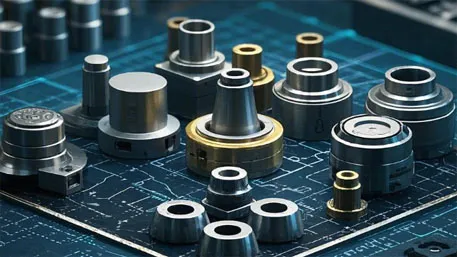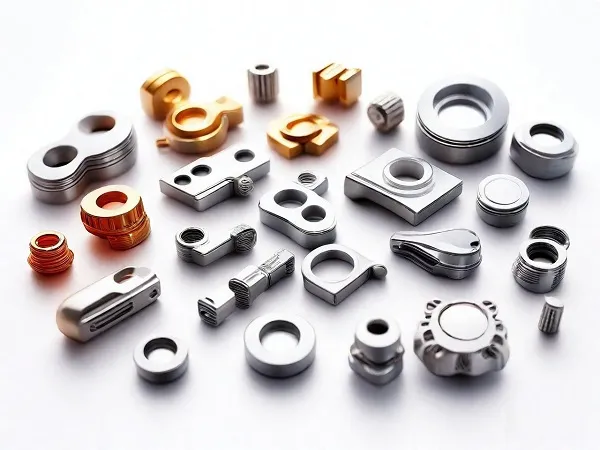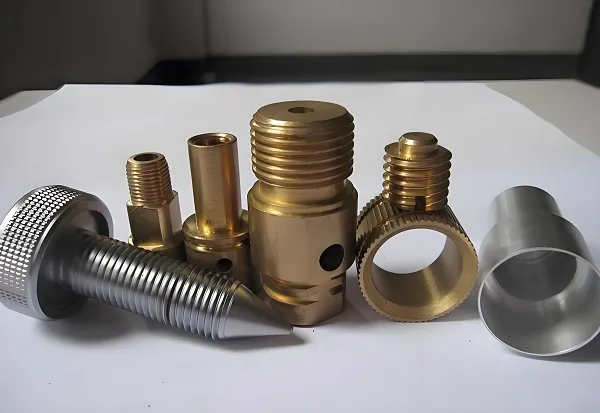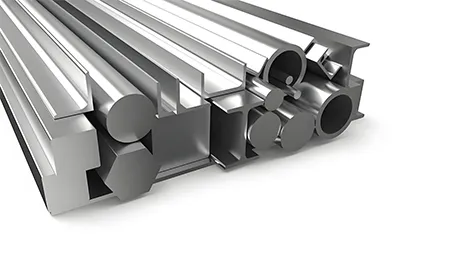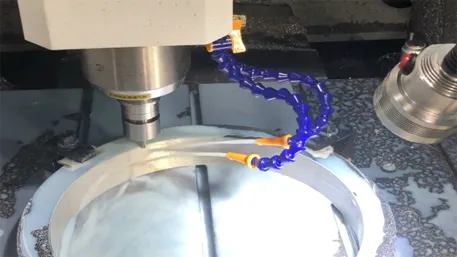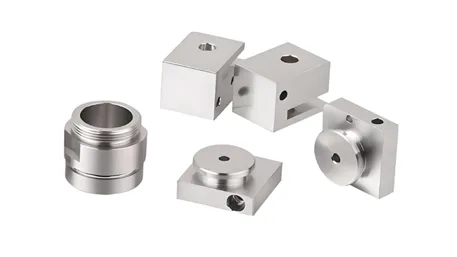CNC lingo refers to the specialized terminology, acronyms, and jargon used in computer numerical control (CNC) machining. It encompasses terms describing machinery, processes, tools, programming codes, and operational actions, serving as a precise communication tool for engineers, programmers, operators, and technicians. This lingo ensures clarity in technical discussions, programming, troubleshooting, and training, minimizing errors in CNC operations where precision is paramount.

Common CNC terms, their meanings, and usage scenarios
CNC machining relies on an extensive set of specialized terms to describe equipment, processes, and operations. Below are key terms, their definitions, and typical contexts of use:
I. Terms related to equipment and components
-
CNC Machine
Meaning: Equipment that automates machining by controlling tool or workpiece movement via computer programs, such as CNC lathes, milling machines, and machining centers.
Usage scenario: Widely used in manufacturing. It is mentioned when discussing types of machining equipment or overall processing capabilities, e.g., “This CNC machine can process complex curved parts.” -
Axis
Meaning: A reference for describing the direction of machine movement. Common axes include X (left-right), Y (front-back), and Z (up-down). Multi-axis machines may also have A, B, and C (rotary axes).
Usage scenario: Specifying tool movement directions in programming and operation, e.g., “Feed 10mm along the positive X-axis”; when discussing a machine’s processing range, such as “5-axis machines can achieve more complex spatial surface machining.” -
Spindle
Meaning: The component in a machine that drives the tool or workpiece to rotate. Its speed directly affects processing efficiency and surface quality.
Usage scenario: Describing processing parameters or troubleshooting, e.g., “The spindle speed is set to 3000 RPM” or “Abnormal spindle noise may be caused by worn bearings.” -
Chuck
Meaning: A device mounted on the spindle or worktable to clamp workpieces or tools. Common types include three-jaw chucks (self-centering, suitable for round workpieces) and four-jaw chucks (manually adjustable, suitable for irregular workpieces).
Usage scenario: When clamping workpieces, e.g., “Clamp the 50mm diameter bar with a three-jaw chuck”; when discussing clamping stability, such as “Four-jaw chucks hold eccentric parts more securely.”
II. Terms related to programming and codes
-
G-code
Meaning: Standardized codes in CNC programming used to control machine movements, tool functions, etc., such as G00 (rapid positioning), G01 (linear interpolation), and G02/G03 (circular interpolation).
Usage scenario: Writing processing instructions during programming or analyzing code logic during debugging, e.g., “G01 X50 Y30 F100 means moving linearly to X50, Y30 at a feed rate of 100mm/min.” -
M-code
Meaning: Auxiliary function codes that control machine on/off actions (e.g., spindle start/stop, coolant on/off), such as M03 (spindle clockwise rotation), M08 (coolant on), and M30 (program end and reset).
Usage scenario: Cooperating with G-codes in programming to implement auxiliary operations, e.g., “Use M30 at the end of the program to ensure the spindle and worktable reset after processing.” -
Feed Rate
Meaning: The speed at which the tool moves relative to the workpiece, usually in mm/min or mm/rev. It affects processing efficiency and surface finish.
Usage scenario: Setting cutting parameters during programming, e.g., “Set the feed rate to 200mm/min for roughing and 50mm/min for finishing to ensure surface quality”; when discussing efficiency adjustments, such as “Excessively high feed rates may accelerate tool wear.” -
Spindle Speed
Meaning: The number of spindle rotations per minute (RPM), determined by tool material, workpiece material, and cutting method.
Usage scenario: Matching cutting requirements during programming and operation, e.g., “A spindle speed of 10,000 RPM is suitable for high-speed steel tools machining aluminum alloy”; when addressing cutting vibrations, such as “Reducing spindle speed can minimize surface ripples on the workpiece.”
III. Terms related to machining processes and operations
-
Toolpath
Meaning: The trajectory of the tool relative to the workpiece during machining, defined by G-codes. It directly impacts processing accuracy and efficiency.
Usage scenario: During programming and simulation, e.g., “Optimizing the toolpath can shorten machining time”; when analyzing processing defects, such as “Overcutting may result from incorrect toolpath calculations.” -
Cutting Tool
Meaning: Tools used to remove material from workpieces, such as milling cutters, drills, turning tools, and taps. They are classified by material (e.g., high-speed steel, carbide, ceramics).
Usage scenario: When selecting tools, e.g., “Carbide tools should be used for stainless steel to enhance wear resistance”; when discussing tool life, such as “Excessive feed rate for this milling cutter has shortened its service life.” -
Work Offset
Meaning: Parameter settings that align the workpiece coordinate system origin with the machine coordinate system origin, ensuring programs run according to the workpiece’s actual position.
Usage scenario: Calibration after workpiece clamping, e.g., “Set the G54 work offset using a tool setter”; when resolving dimensional deviations, such as “The workpiece’s X-dimension is too small—adjust the X offset in G54.” -
Coolant
Meaning: Fluids (e.g., emulsions, oil-based coolants) used to cool tools and workpieces, lubricate cutting surfaces, and flush away chips during machining.
Usage scenario: Controlling cooling systems during operation, e.g., “Turn on the coolant when milling cast iron to prevent tool overheating”; when discussing the machining environment, such as “Water-soluble coolants can reduce residues in aluminum alloy processing.”
IV. Terms related to troubleshooting and debugging
-
Overcut
Meaning: A situation where the tool removes more material than programmed, causing workpiece dimensional errors or scrapping.
Usage scenario: During quality inspection and debugging, e.g., “Overcutting may result from incorrect tool radius compensation settings”; when optimizing programs, such as “Adding arc transitions to the toolpath can avoid corner overcutting.” -
Chatter
Meaning: High-frequency vibrations between the tool and workpiece during machining, causing surface ripples on the workpiece and accelerated tool wear.
Usage scenario: When identifying processing defects, e.g., “Resonance between spindle speed and the tool’s natural frequency can cause chatter”; when adjusting parameters, such as “Reducing feed rate or using a more rigid tool can suppress chatter.” -
Tool Change
Meaning: Automatically or manually replacing tools during machining to adapt to different processes (e.g., changing to a milling cutter after drilling). Machining centers typically use a tool magazine for automatic tool changes.
Usage scenario: During programming and multi-process machining, e.g., “Use the M6 command in the program to trigger automatic tool change”; when discussing processing efficiency, such as “Excessively long tool change times in the magazine affect production cycles.”
These terms form the “language system” of the CNC field, ensuring precise communication among practitioners in design, programming, operation, and maintenance. Familiarity with CNC lingo is essential for technical collaboration, problem-solving, and skill development.

